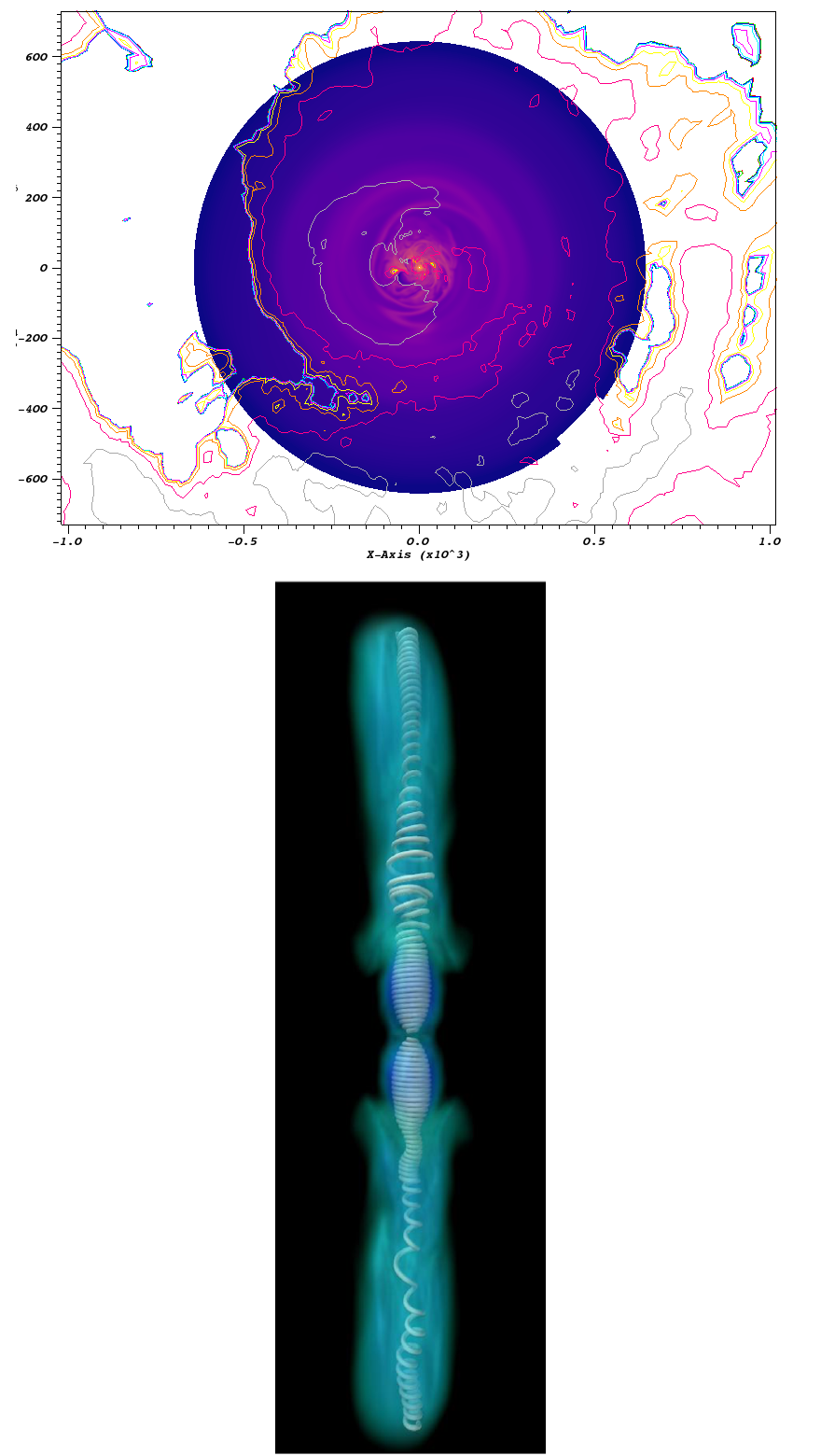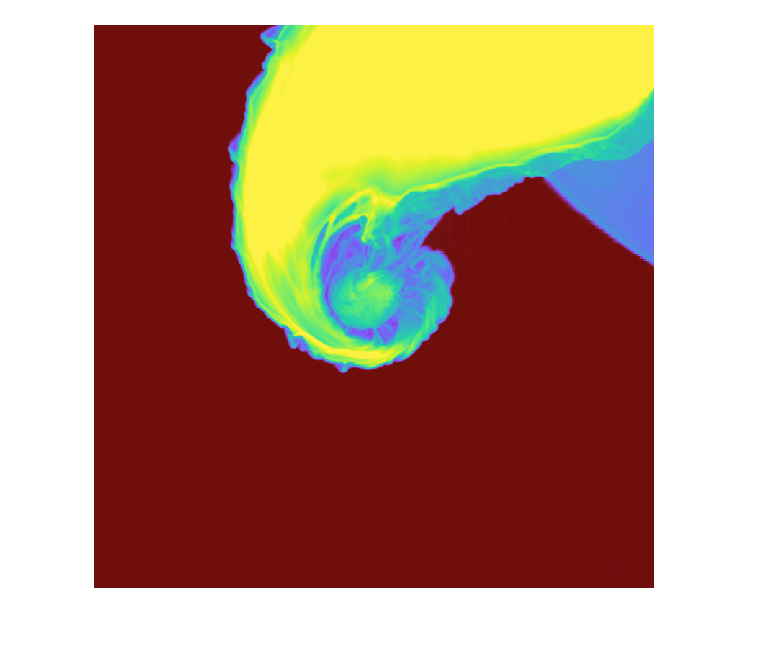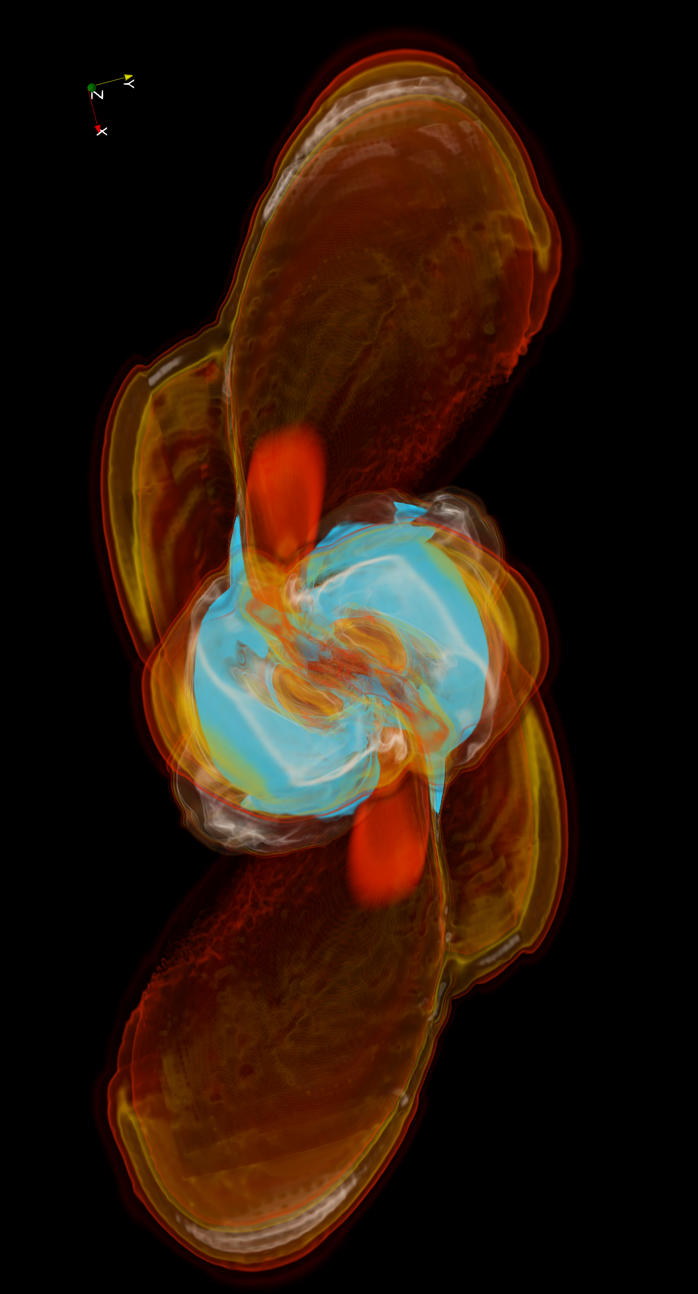
Obróć ekran, aby
przeglądać stronę

O nas
Struktura
Nauka
Edukacja
Dla pracowników


Theoretical studies have shown that the muti-wavelength emission in the nuclei of the active galaxies, and black hole binaries, is fueled by their accretion disks. The magnetic fields therein must mediate the transfer of mass and angular momentum. In addition, shock waves, possibly related to the regions tidally excited by the companion star in a binary system, may influence the accretion process and observed flaring emission. Finally, the episodes of jets being launched from the central engines, in both radio-blazars and in gamma ray bursts, are giving important insight into the physics of black hole accretion, and help estimate the fundamental parameters of the black holes, such as their masses and spins. These effects are studied by advanced numerical simulations, that use the methods of general relativistic magnetohydrodynamics.

Theoretical investigations are verified experimentally through the timing and spectral properties of the observed sources. In the last years, the observational context has been enormously enhanced due to discovery of gravitational waves, which give independent constraints on the masses (and possibly spins) of the merging compact stars. The multi-wavelength detection of accompanying events of the short GRBs, such as the kilonovae, have brought further important information about the conditions within the post-merger environment. Finally, the fundamental theories of gravity can be tested now with unprecedented precision through the signals from compact objects, such as quasars, supernovae, and gravitational-wave sources.
Symposium on "Relativistic astrophysics. Theory and observational perspectives" will be held on October 6-9 2020 at the Center for Theoretical Physics in Warsaw.
Topics to be covered are:
There will be a small conference fee for registered participants, which will be used to cover the catering on lunch breaks.
The fee is:
- 50 Euro/220 PLN, if paid before April 30th
- 60 Euro/260 PLN , if paid after that date
Details for bank transfer are:
Centrum Fizyki Teoretycznej PAN
Al. Lotników 32/46
02-668 Warszawa
Account number: 76 1130 1017 0020 1465 1320 0005
IBAN: PL 76 1130 1017 0020 1465 1320 0005
SWIFT: GOSKPLPW
Bank address:
Bank Gospodarstwa Krajowego
Al. Jerozolimskie 7, 00-955 Warszawa
Please specify in the transfer title:
Conference fee RATOP2020, Name of the Participant
People interested to receive the invoice, are requested to send us the following information:
1. name, surname, address of the institution
2. NIP number
The organizers do not provide any accommodation. Please search for accommodation on your own (at booking.com or IF PAN Guest Rooms). Organizers do not pass any personal data to third parties in order to inform about possible accommodation places.
Please do not answer any unexpected e-mails with respect to the hotel booking and never reveal your credit card number through e-mail or phone contact. Please contact any of LOC members if you need help.

Organizers (LOC): Agnieszka Janiuk, Bożena Czerny, Wojtek Hellwing, Michal Zajacek, Ishika Palit, Mary-Loli Martinez-Aldama, Maciej Bilicki, Rafał Opiela
Scientific Organized Committee: Michal Bejger (CAMK PAN, Warsaw), Sandip Chackrabarti (Indian Centre for Space Physics, Kolkata), Dimitrios Giannios (Purdue University), Vladimir Karas (Astronomical Institue, Prague), Nicole Lloyd-Ronning (Los Alamos National Laboratory), Enrico Ramirez-Ruiz (University of California, Santa Cruz), Marek Sikora (CAMK PAN, Warsaw)

SLOT 1
SLOT 2
SLOT 3
SLOT 4
SLOT 5
SLOT 6
SLOT 7


Strona korzysta z plików cookies w celu realizacji usług zgodnie z Polityką prywatności. Możesz określić warunki przechowywania lub dostępu do cookies w Twojej przeglądarce, lub konfiguracji usługi. Administratorem Twoich danych jest Centrum Fizyki Teoretycznej PAN z siedzibą w Warszawie, Al. Lotników 32/46. W sprawach związanych z Pani/a danymi należy kontaktować się bezpośrednio z Inspektorem Ochrony Danych, e-mail: iod(a)cft.edu.pl